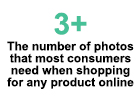
By Staff
Tuesday, April 9, 2019 1:49 PM
Today’s consumers overwhelmingly value and trust brands that offer a good product experience. They are both willing to pay more, and are likely to buy more often, from brands that deliver it. Brands that sell on online retail sites create great product experiences that consumers trust by heavying up on content. These points are among the key findings from a new research report by Boston-based digital marketing firm
Salsify titled “Why Product Experiences are What Win Consumer Trust in the Digital Age.”
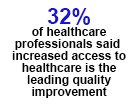
By Staff
Monday, April 8, 2019 1:41 PM
Increased access to healthcare and improvements in patient satisfaction are the leading quality improvements that telehealth programs can bring to healthcare organizations, according to the 2018 Healthcare Benchmarks: Telehealth & Remote Patient Monitoring. The survey, conducted by the
Healthcare Intelligence Network (HIN) also examined the impact that telehealth has on five additional healthcare quality measures: Medication adherence, health complications, patient compliance, medical errors and diagnosis accuracy. Additional metrics and benchmarks on telehealth and remote patient monitoring can be found the HIN report, which can be ordered
here.
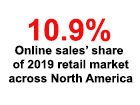
By Staff
Friday, April 5, 2019 4:43 PM
The retail apocalypse is not upon us. At least this is the view of the analysts at the market research firm eMarketer, who recently commented that they don’t believe “online buying is taking over the world.” For many consumers, “brick-and-mortar shopping is still important,”
the firm said. “They’ll spend almost 90 percent of their retail dollars in person [inside retail stores] this year, and a large portion of that foot traffic will come from ‘webrooming.’” “Webrooming,” according to the firm, is the process of researching a product online before going to a physical store to make a purchase. This practice has helped boost in-store traffic for some leading retailers over the past year. Millennials, as expected, are most likely to webroom, with four in 10 doing this during the 2018 holiday season, compared with 35 percent of Gen Xers and 33 percent of baby boomers, according to the research firm Oath. “As millennials age, and webrooming continues to gain prominence, retailers will likely focus on further streamlining the omnichannel journey,” eMarketer said.
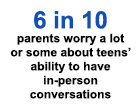
By Staff
Thursday, April 4, 2019 3:37 PM
Smartphones and social media are now an almost universal feature of teenage life in the U.S. More than 9-in-10 U.S. teens ages 13 to 17 say they have access to a smartphone or use social media, according to a
2018 Pew Research Center survey. But this increased connectivity can come with challenges for teens—as well as their parents. As part of Pew’s research into Americans’ digital lives, the Center also surveyed over 1,000 parents of teens to better understand their experiences with raising teens in the digital age. The survey came up with
seven key findings about parents, teens and their relationships and viewing habits when it comes to digital technology.
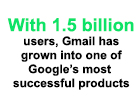
By Staff
Wednesday, April 3, 2019 4:38 PM
Exactly 15 years ago, on April 1, 2004,
Google surprised many with the
launch of Gmail, its own web-based email client. With 1 gigabyte of free storage, conversation-based grouping of messages and enhanced search features, the service was superior to most, if not all competitors at the time, making its eventual success look inevitable in hindsight. With
1.5 billion users, Gmail has grown into one of Google’s most successful products and one of the most popular email clients in the world. According to data published by
mail analytics firm Litmus, Gmail is only beaten by Apple’s native iPhone email app in terms of usage. According to Litmus’ analysis of 834 million email opens worldwide, 26 percent of those emails were opened within Gmail, while 28 percent were opened in the iPhone email client.
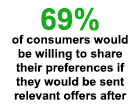
By Staff
Monday, April 1, 2019 1:57 PM
Consumers are happy to be contacted by retailers, as long as communications are tailored, a recent study by
Forrester Consulting found. In fact, consumers are more likely to shop frequently with those retailers and more likely to establish loyalty with those retailers, according to a study of 502 North American consumers aged +18 who shop online at least monthly conducted by Forrester in November, 2018. These high expectations for personalization require from retailers more than traditional segmentation based on single data points like age, gender, or purchase history, which point to a past need, rather than a current intent.
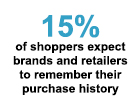
By Staff
Monday, April 1, 2019 12:58 PM
There is a rising consumer expectation that a brand truly knows each shopper. Consumers want a product designed to meet their exact needs and lifestyle. New consumer research from
Salsify, a Boston-based digital marketing firm, probes shoppers’ rising expectations about brands. Salsify found that 30 percent of its survey respondents are looking for relevant reviews and 20 percent seek sophisticated product recommendation engines to help them quickly determine if the product is right for them. Fifteen percent of shoppers also expect brands and retailers to remember their purchase history.

By Staff
Friday, March 29, 2019 5:36 PM
When the data and the dollars for 2018 Internet advertising are finally tabulated, it looks like 2018 will turn out to be a whopping good year. According to a recent announcement by the
Interactive Advertising Bureau (IAB), U.S. digital advertising revenues rose to $26.2 billion in last year’s third quarter, an increase of 20.6 percent compared with the same period of 2017. This “solidifies 2018’s claim as the highest-spending first three quarters on record,” IAB said, citing the IAB Internet Advertising Revenue Report prepared by PwC US. In total, marketers spent $75.8 billion during 2018’s first three quarters, or 22 percent more than they had spent during the same period a year ago, according to the
announcement. “2018 was a landmark year for U.S. digital advertising,” IAB senior vice president, research and measurement, Sue Hogan said in the announcement. “Brands continued their record-breaking investment in the marketplace in the third quarter. Last year saw significant growth in the OTT (over-the-top content) marketplace and in the direct-to-consumer brand ecosystem—contributing factors in digital’s successful Q3.” To view previous reports, please go to
www.iab.com/adrevenuereport.

By Staff
Thursday, March 28, 2019 5:24 PM
Mobile has redefined the digital experience, making it better than ever before. In turn people expect more. They gravitate toward brands and experiences that are helpful in the moment and that meet expectations across the customer journey. In fact, 79.1 percent of people say experiences are as important as a company’s products and services. So it’s no surprise that marketers are looking to advanced native formats to make connections on mobile. eMarketer recently took a deeper look to see specifically how Verizon Media native ads drive increased brand awareness, affinity and consideration. Check out their research findings in this infographic.
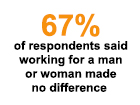
By Staff
Wednesday, March 27, 2019 3:32 PM
Most respondents to a recent
Women In Optometry Pop-up Poll said that it makes no difference to them whether they’re working with or for men or women. The pop-up poll asked the simple question: “Would you rather work for a man or a woman?” Sixty-seven percent of nearly 150 respondents said it made no difference, but of those expressing a preference, slightly more said they would prefer to work for a woman. The next question asked if the respondent would rather work with a men or women. The responses were similar, but the gap closed between those who preferred to work with men versus those who preferred to work with women.
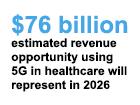
By Staff
Tuesday, March 26, 2019 1:39 PM
The advent of 5G networks, which enable data to flow faster, will soon transform many industries and many aspects of everyday life. The accompanying infographic from
CommScope, a firm that designs, builds and manages wired and wireless networks, shows five major ways that 5G is superior to the 4G networks of today. Market research firm
CB Insights notes that there are many ways in which 5G could improve health care around the world, while increasing efficiencies and revenue for the health care industry. Using 5G technology in health care is estimated to represent a $76B revenue opportunity in 2026, according to CB Insights.
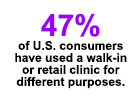
By Staff
Monday, March 25, 2019 2:43 PM
Non-traditional care delivery services are making rapid inroads. According to
Accenture’s 2019 Digital Health Consumer Survey, roughly 29 percent of U.S. respondents say they have used some form of virtual care—an increase from 21 percent in 2017—and walk-in/retail clinics have already gone mainstream (47 percent). Many of those who have not used non-tradition care delivery services would be willing to do so. There is little distinction between consumer preferences for using walk-in channels for flu shots (55 percent vs. 54 percent who would use traditional channels), cold or virus treatment (47 percent vs. 48 percent) or physical injury such as a sprained ankle or backache (41 percent vs. 59 percent). More than one-fifth (21 percent) of U.S. consumers would visit a walk-in clinic for a minor surgery.
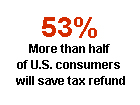
By Staff
Saturday, March 23, 2019 4:38 PM
A survey of more than 1,000 U.S. respondents who expect to receive a tax refund in 2019 found that more than half (53 percent) are anticipating receiving the same, or more, money this year. The survey, which attempted to analyze consumer behavior related to tax season, was conducted by
Valassis, an “intelligent media delivery” company. While a large portion of respondents, 53 percent, plan to save the majority of their refund, more than one in five (21 percent) are looking to spend all or most of it, according to an announcement about the survey results. Additionally, 63 percent expect to get more than $1,000. “Tax season presents a unique opportunity for marketers to motivate consumers with high purchase intent, or those who are unsure how they’ll spend their refund and can be readily influenced,” said Curtis Tingle, chief marketing officer at Valassis, said in the announcement. “Having extra cash on-hand can encourage consumers to spend more freely on experiences like dining out or high-consideration areas like home improvement projects. Retailers can capture a portion of this spend throughout tax season and beyond by placing relevant deals in front of consumers.” All respondents to this survey, conducted in February 2019, were located in the United States and were over the age of 18.
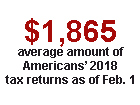
By Staff
Tuesday, March 19, 2019 2:38 PM
Tax filing season 2019 is in full swing, and since the IRS reported its first preliminary numbers on Feb 1, there has been some outrage about the average amount of
Americans’ tax returns appearing lower than in previous years. Some suspect Donald Trump’s tax reform to be the reasons why Americans could effectively be paying more taxes this year. But the IRS cautions that because of the recent government shutdown, processing of tax returns is behind and final numbers could show a different picture. On February 1,
IRS numbers indicated that the average amount of tax returns filed by that time for 2018 was $1,865, compared to $2,035 by the same time the previous year.
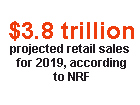
By Staff
Tuesday, March 19, 2019 12:09 PM
WASHINGTON—The National Retail Federation forecast that retail sales during 2019 will increase between 3.8 percent and 4.4 percent to more than $3.8 trillion despite threats from an ongoing trade war, the volatile stock market and the effects of the government shutdown, according to this story from the NRF. Preliminary estimates show that retail sales during 2018 grew 4.6 percent over 2017 to $3.68 trillion, exceeding NRF’s forecast of at least 4.5 percent growth. The number includes online and other non-store sales, which were up 10.4 percent at $682.8 billion. That met NRF’s forecast of 10 percent to 12 percent online growth, and online is expected to grow in the same 10 percent to 12 percent range again this year. The numbers exclude automobile dealers, gasoline stations and restaurants.